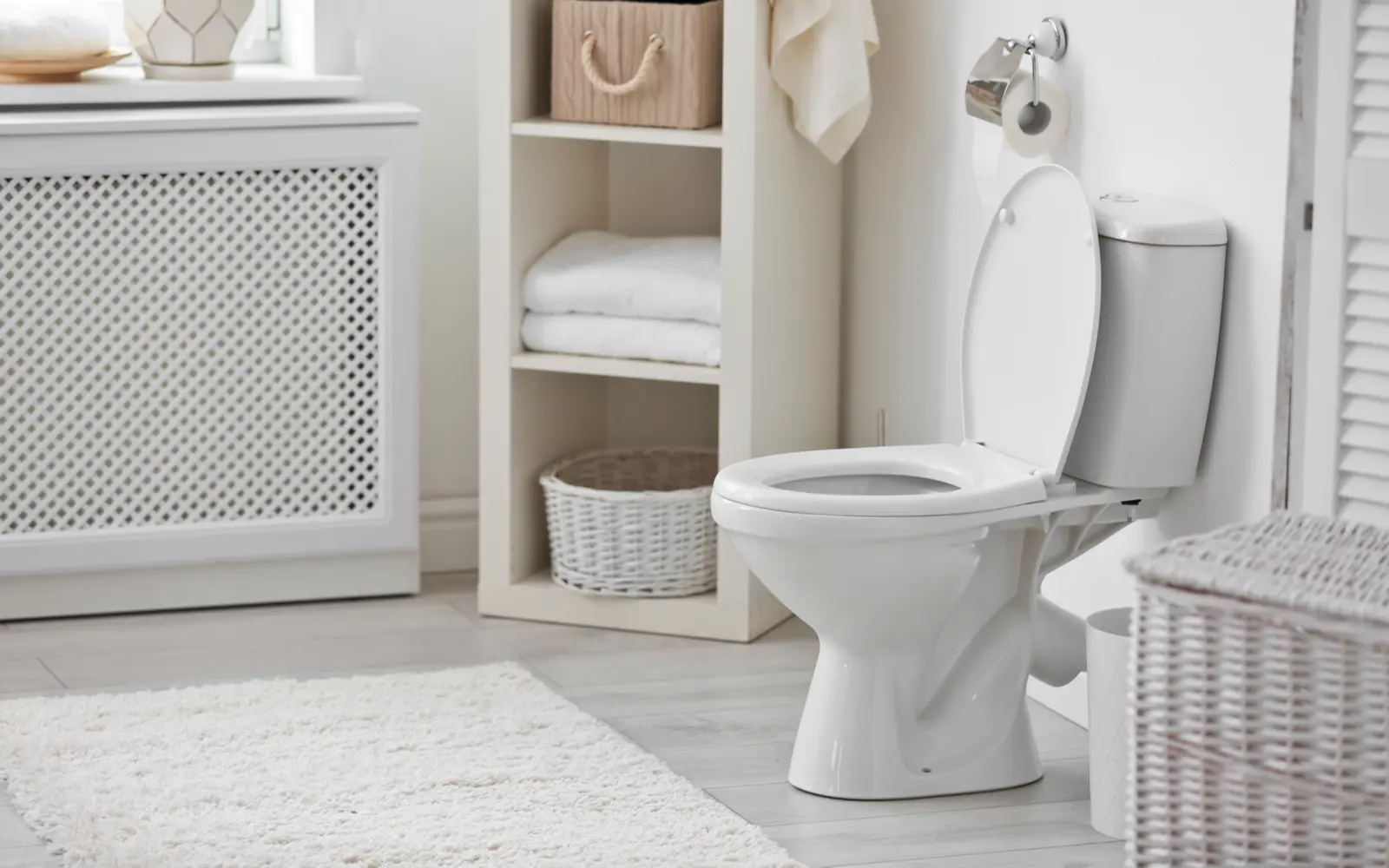Choosing new toilet dimensions can be a very stressful challenge that even the most experienced homeowners struggle with.
By knowing which toilet dimensions to choose, you’ll be well on your way to having both a stylish and functional bathroom in no time.
But first, with so many guides online, what makes ours the best?
Well, I used to work in the plumbing department at Menards, so I consider myself an expert on anything that goes into a bathroom. With that out of the way, let’s dive in!
Factors That Affect Toilet Dimensions
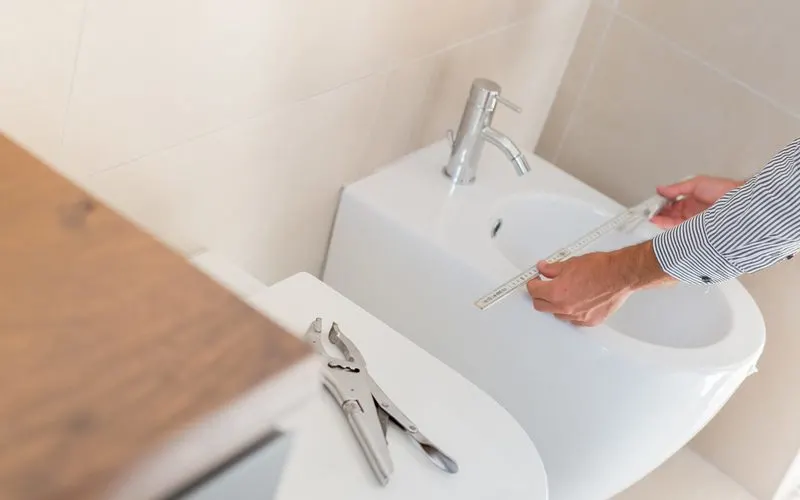
Tostphoto/Shutterstock
There are two key concepts you must become familiar with to decide on optimal toilet dimensions. First, you need to know the factors that influence dimensions. These include:
- The rough-in
- The toilet bowl shape
- Height
- Width
Then, it’s important to consider the different types of toilet designs:
- One-piece
- Two-piece
- Compact
- Corner
- Wall-mounted
- Square
- Tankless
- Compost
We will explore all of these in detail in the following sections.
Average Toilet Size Guide by Component
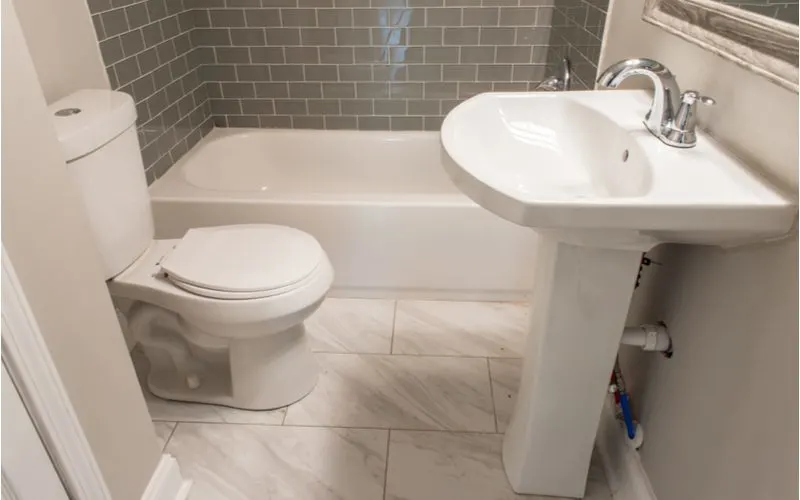
Evan Reece/Shutterstock
Buying a toilet is a longer process than you might expect. Several factors go into determining the final measurements of a toilet dimension.
Understanding these factors is paramount to a seamless experience in the toilet market.
Finding the perfect combination of parts on a toilet model takes consideration, as you will be spending a significant amount of time on your new purchase.
The Rough-In
The rough-in measurement is the measurement of the distance between the floor drain and the wall.
These dimensions are the most important ones to consider when choosing a new toilet since they will affect how much left and right clearance and bowl space you will need.
Additionally, it will affect where the cold water line will be placed in the bathroom. 12 inches is the most common rough-in size, although toilets can also come with 10-inch or 14-inch rough-ins. For smaller bathrooms, a 10-inch rough-in is recommended.
Toilet Bowl Shape
Toilet bowls typically come in two bowl shapes: elongated or round. From the back of the toilet bowl, round bowls measure about 16.5 inches, while elongated bowls measure approximately 18.5 inches.
In total, round bowls measure about 28 inches from the wall, while elongated bowls measure about 31 inches from the wall.
Choosing a toilet bowl shape comes down to personal preference and what you find comfortable, but the shape of the bowl will affect how your toilet fits within the bathroom.
A round bowl is recommended for smaller bathrooms, while an elongated shape will cater to those looking for a more modern style. A longer bowl can be treacherous if the toilet faces a wall in a smaller bathroom.
Height
Toilet height is measured from the top of the toilet bowl rim to the floor. The standard toilet stands at around 15 inches tall. However, some models reach as high as 19 inches.
Based on your own height, you can determine which toilet height will be the best fit for you. Shorter people will most likely look for a toilet with a 14–15-inch height, while taller people will find the 17-inch and up models to be more comfortable.
Most people shouldn’t experience any problems with any toilets, but seeking out the right height can be the difference between a rickety bar stool and a porcelain throne.
Width
The width of a toilet is the horizontal measurement between the left and right sides of the toilet.
While most toilets run about 20 inches in width, it is recommended that you have 30 inches of free space available on the wall you are looking to place the new toilet on.
Different Types of Toilet Designs
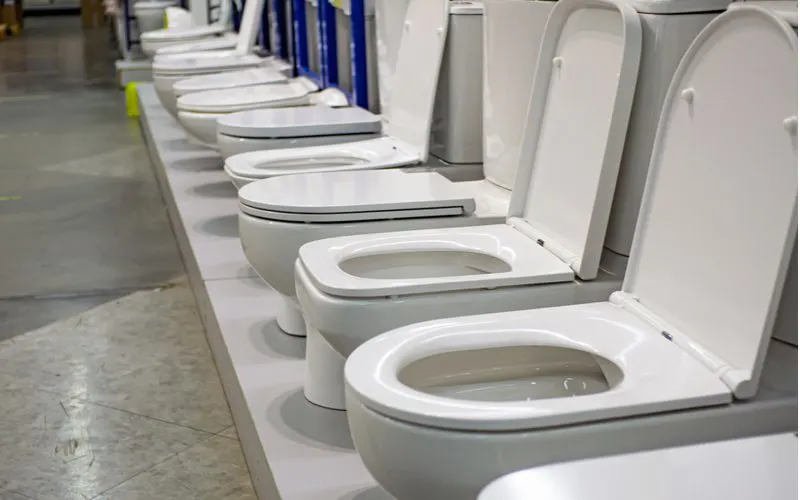
Semyon Nazarov/Shutterstock
There are many kinds of toilet designs out there, so thankfully, you will likely have more than one option that fits your space.
One-Piece Toilets
One-piece toilets are where the bowl is connected to the tank. Although this kind of toilet is usually more expensive, it tends to save space and make it easier to clean.
Installation is also easier with this kind of toilet.
Two-Piece Toilets
Most standard toilets fall into this category. Two-piece toilets have a separate bowl and tank.
Some of the benefits of this type include the increased water storage capacity and its known longevity. If you are working with limited space, this toilet may not be the best fit for you.
Compact Toilets
If you’ve ever been on a boat or in a tiny apartment, chances are this was the toilet you saw in the bathroom.
Since they lack a water tank, compact toilets are perfect for saving space but are not the most powerful options out there.
Corner Toilets
A corner toilet has a water tank that’s shaped like a triangle. The point of this design was to save space in smaller bathrooms.
While these can be an interesting choice design-wise, they can also negatively affect the overall layout of the bathroom by taking up a valuable corner.
Wall-Mounted Toilets
Wall-mounted toilets are similar to compact toilets in that they lack a tank but take space-saving to the next level by not having a base beneath the bowl. The tank is installed on the wall.
This makes cleaning the toilet very efficient. Unfortunately, the installation process can be quite complicated since it has to be very stable to hold any weight on it.
Square Toilets
Square toilets are pretty uncommon due to the low comfort level they provide. On the upside, these toilets are able to hold more waste and can be a very interesting interior design choice.
Tankless Toilets
A tankless toilet is linked straight to a water pipe in the wall and is paired with an electric pump to make the flush more powerful. This toilet is another excellent choice for those looking to save space.
The negatives of this toilet include the fact that it requires more water for it to have a successful flush. Additionally, if the battery is dead, the bathroom will be unable to flush, which is obviously highly inconvenient in some situations.
Compost Toilets
Compose toilets use bulking materials such as wood chips or sawdust to absorb waste.
This environmentally friendly option will save you money on your water bill while also saving you space.
Frequently Asked Questions
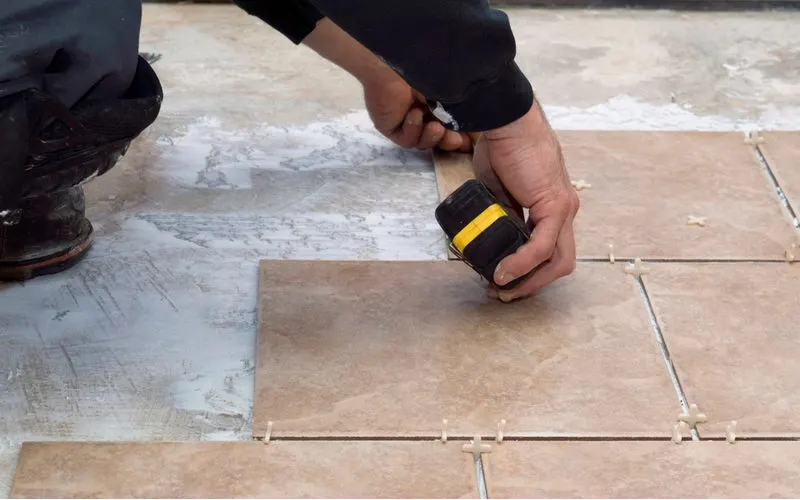
Clarke Colin/Shutterstock
Although you may feel like measuring and deciding on toilet dimensions is essentially a straightforward process, many people find themselves asking questions they had overlooked at first.
Here are a few commonly asked questions:.
How much room should there be between the toilet and other bathroom furniture?
It is recommended that there be at least 15 inches of space between any pieces of furniture in the vicinity of the toilet. An additional 15 inches of space is recommended between any sinks due to sanitation concerns. A toilet flush can launch bacteria all over the room, so you’ll want enough clearance to keep your toothbrush safe!
Can I take out a bigger rough-in and exchange it for a smaller rough-in?
Yes, you can use a toilet flange to fix the gap. The flange will fix the void left by the bigger rough-in when replacing a bigger rough-in with a smaller rough-in.
Do all toilet seats fit the same?
In general, the toilet seat will not fit an elongated toilet seat. Luckily, most modern toilet seats are adjustable to fit almost any toilet shape.
What is the smallest toilet type available?
In general, compact toilets are the smallest type of toilet you can buy. Some of the smaller models run at just 24 inches deep and about 15 inches wide.
How expensive is it to move a toilet?
Moving a toilet due to poor toilet dimension measurements can be very pricy, costing an average of between $2,500 and $3,500. This cost is due to the changes in plumbing that would have to be performed in order for the toilet to be moved.
What type of toilet is best if I am on a budget?
Standard elongated toilets usually are the most cost-effective choice when it comes to a standard toilet. Keep in mind that the more water a toilet uses, the higher your water bill will be. With this in mind, a compost toilet might be the cheapest option.
Why Do Toilet Dimensions Matter?
Toilet dimensions are not only crucial in a spatial sense, but they are also critical factors in making your toilet a comfortable and safe experience.
Put in the time and effort to measure your bathroom and new toilet accurately, and you’ll save yourself a headache.

